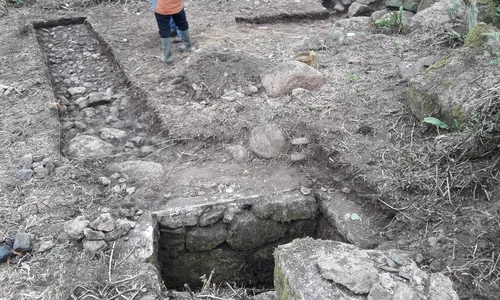 Over on our social media channels we've been highlighting various aspects of our work and the Penwith landscape with our Penwith A to Z- as you'd expect it's one aspect of Penwith for each letter of the alphabet! For those of you who aren't on social media, or who might have missed some of the posts, in this blog we're recapping the 26 posts. Our social media channels are full of similar content, so if you don't already make sure you follow us on Facebook, Twitter or Instagram.
Over on our social media channels we've been highlighting various aspects of our work and the Penwith landscape with our Penwith A to Z- as you'd expect it's one aspect of Penwith for each letter of the alphabet! For those of you who aren't on social media, or who might have missed some of the posts, in this blog we're recapping the 26 posts. Our social media channels are full of similar content, so if you don't already make sure you follow us on Facebook, Twitter or Instagram.
So without further ado here is our Penwith A to Z:
A is for Archaeology - Penwith is amazingly rich in archaeological sites, from Neolithic treasures to mining workings. Which is your favourite Penwith archaeological site?
B is for Biodiversity - The Penwith landscape hosts a wide range of wildlife species and landscape character types. It helps make the Penwith landscape an unique and diverse landscape.
C is for Character - Penwith has a number of characteristics that make it unique, and we are seeking to record these in Local Landscape Character Assessments as part of our That's Our Parish project.
![]() D is for Downs - A large proportion of Penwith is formed of moorland, or downs- it provides a habitat for a wide range of species. Our Up with the Downs project aims to work with farmers and landowners to help manage these wild spaces.
D is for Downs - A large proportion of Penwith is formed of moorland, or downs- it provides a habitat for a wide range of species. Our Up with the Downs project aims to work with farmers and landowners to help manage these wild spaces.
E is for Enjoyment - We want to encourage people to get out and enjoy the Penwith landscape in a responsible way. To this end we have created our trail guides and ancient sites digital outputs here on our website.
F is for Farming - Farming is a massive part of Penwith's economy, and the work of farmers has helped shape and support our landscape. We have a section for farmers on our website here.
G is for Ghosts and Giants - Both feature heavily in Penwith's folklore, and many local landmarks are named after Giants- for example Creeg Tol is also known as the Giant's Footsteps!
H is for Hedges - The Cornish hedge has been an important part of Penwith's landscape for centuries, marking field boundaries and providing wildlife habitats. Our Penwith Hedges project aims to help conserve, repair and celebrate our local hedges.
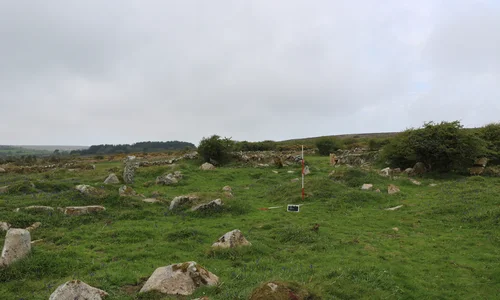 I is for Iron Age - Penwith boasts archaeology from a wide range of time periods, including several which are thought to date from the Iron Age era.
I is for Iron Age - Penwith boasts archaeology from a wide range of time periods, including several which are thought to date from the Iron Age era.
J is for Jan Tregeagle - Described by MA Courtney as the 'Cornish Bluebeard', this lawyer's dark deeds both before and after death are a cornerstone of Cornish folklore. His presence is also felt in Penwith, where if the sea roars before a storm locals say 'Tregeagle is calling'.
K is for Kernewek - The Cornish language makes its presence known throughout Penwith, particularly in place and field names. Our Taking Names project aims to record and celebrate this heritage.
L is for Lichens - A wide variety of these wonderful species can be found across Penwith, each adapted for their own particular habitat.
M is for Mythology - The Penwith landscape is rife with myths and legends, from Arthurian battlegrounds to Pirate Wreckers, and from tales of the devil stalking the landscape to dancing maidens petrified into our stone circles as a punishment from God!
N is for Neolithic - The Neolithic period spans approximately from 4000 to 2500 BCE, and is considered the last part of the Stone Age. Many of Penwith's archaeological treasures are thought to date from this period, including our quoits and stone circles.
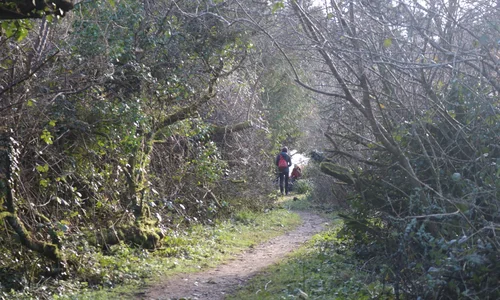 O is for Open Access - We are very fortunate within Penwith to have several areas of Open Access land, where you can go walking and take in some of spectacular views in our landscape. You can encounter livestock and sensitive wildlife on this land so please do act with consideration when out and about. You can find open access land on Cornwall Council's interactive map.
O is for Open Access - We are very fortunate within Penwith to have several areas of Open Access land, where you can go walking and take in some of spectacular views in our landscape. You can encounter livestock and sensitive wildlife on this land so please do act with consideration when out and about. You can find open access land on Cornwall Council's interactive map.
P is for Paths - Penwith is home to many wonderful paths, bridleways and rights of way, and exploring these is a great way to get some exercise and view some beautiful scenery. Many paths do cross other's land so please do stick to the path, and be mindful of livestock, wildlife and other path users!
Q is for Quoits - These wonderful Neolithic structures are thought by archaeologists to have been used by communal and dynastic burials. Penwith has a number of these structures- some still standing, some now existing in a collapsed state.
R is for Roundhouses - These structures are thought to date from the Bronze Age and Iron Age periods, and can be found in many locations in Penwith. Our Ancient Penwith project aims to work with and promote Penwith's archaeological treasures.
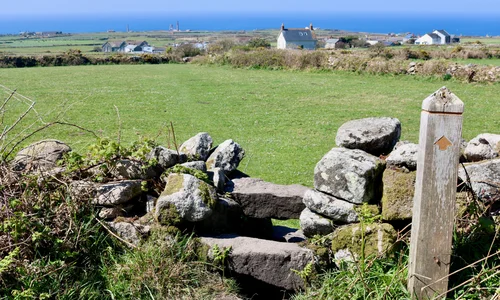 S is for Stiles - Penwith is home to many stiles in a multitude of different designs, and they play a vital role in allowing us to access the many wonderful paths across Penwith. Helping to repair or restore these where needed is a part of our At the End of the Land project.
S is for Stiles - Penwith is home to many stiles in a multitude of different designs, and they play a vital role in allowing us to access the many wonderful paths across Penwith. Helping to repair or restore these where needed is a part of our At the End of the Land project.
T is for the Tinners' Way - This historic path crosses a large part of the Penwith landscape, and was used by tin miners to move the tin from mines in Penwith to the coast for trading. Our Making Tracks project is dedicated to conserving and celebrating this route. On a similar vein, T can also be for Tin Mines. Mining is an important part of the heritage of Penwith, and the remains of tin mines can be seen across the landscape. Mining also features heavily in local folklore.
U is for Underground - We are lucky in Penwith to have a number of fogous, stone lined underground passages. The true purpose of these chambers is debated today, with theories including ritual purposes or for storage.
V is for Volunteers - Our volunteers have always been a vital part of our work. We've recently been taking very small groups of volunteers back out into the landscape in a Covid secure way, and will continue to look at ways of engaging our volunteers in safe ways in the future. To sign up as a volunteer visit our Volunteer pages.
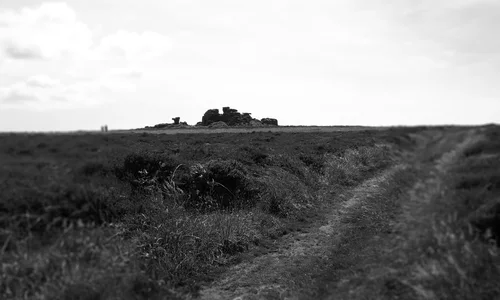 W is for Witchcraft - Penwith has long been associated with witchcraft, magic and charms- many locals were accustomed to visit their local pellar or healer for charms for ailments and protection against 'overlooking' (curses). Famous witches from the area include Old Moll, whose coven was said to haunt Carn Kenidjack, and Madge Figgy.
W is for Witchcraft - Penwith has long been associated with witchcraft, magic and charms- many locals were accustomed to visit their local pellar or healer for charms for ailments and protection against 'overlooking' (curses). Famous witches from the area include Old Moll, whose coven was said to haunt Carn Kenidjack, and Madge Figgy.
X is for Xanthoria parietina - This bright lichen is quite common in Penwith and is also known as Common Orange lichen or Maritime Sunburst.
Y is for Yellow Rattle - This plant is important for our wildflower meadows, as it helps keeps grasses in check and gives other flowers the chance to seed and flower. For this reason we've been collecting Yellow Rattle seeds and spreading them on other sites to encourage restoration of wildflower meadows as part of our Wild Penwith project.
Z is for Zawn - A Zawn is a narrow sea-inlet or fissure in a coastal cliff, caused by coastal erosion and typically with very steep sides. Penwith has a large number of zawns all around its coastline.



